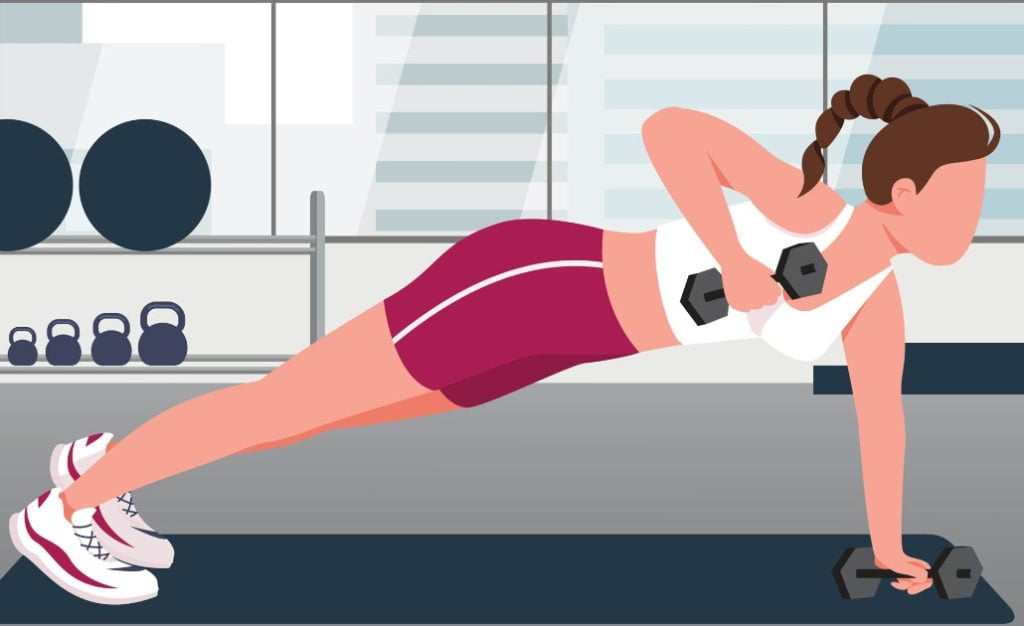Increasing your metabolism can help you burn more calories and maintain a healthy weight. Here are 10 Workout Tips to Increase Metabolism and weight loss at any age or
Boosting metabolism at any age involves a combination of lifestyle factors, including diet, exercise, and overall health practices. Here are strategies to increase metabolism at any age:

10 Workout Tips to Increase Metabolism
Include Strength Training:
What Exercise Boost Metabolism? you can try Strength training is a type of physical exercise that focuses on improving muscular strength by using resistance to induce muscle contraction. This form of training can encompass a variety of techniques, including weightlifting, resistance band exercises, bodyweight exercises, and more. Here’s an overview and some details about strength training:
- Muscle burns more calories at rest than fat does. Incorporate strength training exercises, such as weight lifting or bodyweight exercises, into your routine. This helps increase muscle mass and, in turn, boosts metabolism.
- Advantages:
- Builds lean muscle mass, which increases resting metabolic rate.
- Improves bone density and joint health.
- Enhances overall strength and functional fitness.
- Disadvantages:
- Requires proper form to prevent injury; consider hiring a trainer.
- May cause muscle soreness, especially for beginners.
High-Intensity Interval Training (HIIT):

High-Intensity Interval Training (HIIT) is a form of cardiovascular exercise that alternates short, intense bursts of activity with periods of lower-intensity exercise or rest. This type of training is known for its efficiency in burning calories, improving cardiovascular fitness, and promoting various health benefits. Here’s an overview and details about HIIT:
- HIIT involves short bursts of intense exercise followed by periods of rest or lower-intensity activity. It has been shown to increase metabolic rate and improve cardiovascular health.
- Advantages:
- Efficient calorie burn during and after workouts.
- Improves cardiovascular health and insulin sensitivity.
- Time-effective, often requiring shorter workout durations.
- Disadvantages:
- Intensity may be challenging for beginners; start gradually.
- Potential for overtraining; allow adequate recovery between sessions.
Compound Exercises:

Compound exercises are multi-joint movements that engage multiple muscle groups and work several joints simultaneously. These exercises are contrasted with isolation exercises, which target a specific muscle or joint. Compound exercises are highly effective for building strength, improving coordination, and increasing overall muscle mass. Here’s an overview and details about compound exercises:
- Choose compound exercises that work multiple muscle groups simultaneously. Examples include squats, deadlifts, and lunges. These exercises require more energy and, therefore, increase your metabolism.
- Advantages:
- Engages multiple muscle groups, maximizing calorie expenditure.
- Mimics functional movements used in daily activities.
- Efficient use of time in the gym.
- Disadvantages:
- Requires proper technique to prevent injury; seek guidance.
- May be initially challenging for those with limited mobility.
Stay Active Throughout the Day:

Staying active throughout the day is essential for maintaining overall health and well-being. Sedentary lifestyles have been linked to various health issues, and incorporating movement into your daily routine can have numerous benefits. Here’s an overview and some details on how to stay active throughout the day:
- Incorporate more movement into your daily routine. Take the stairs, walk or bike instead of driving short distances, and stand or stretch regularly if you have a sedentary job. These small activities can contribute to an increased metabolic rate.
- Advantages:
- Cumulative effect on daily calorie burn.
- Improves posture and reduces the negative impact of prolonged sitting.
- Enhances overall energy levels.
- Disadvantages:
- May be challenging for those with desk-bound jobs.
- Requires conscious effort to incorporate movement consistently.
Cardiovascular Exercise:

Cardiovascular exercise, also known as aerobic exercise or cardio, refers to physical activities that increase your heart rate and breathing, promoting the efficient transport of oxygen throughout the body. These exercises play a crucial role in improving cardiovascular health, enhancing endurance, and burning calories. Here’s an overview of cardiovascular exercise:
- Regular cardio workouts, such as running, cycling, or swimming, can help burn calories and improve overall cardiovascular health. While not as effective as HIIT for short-term metabolic increases, they contribute to long-term benefits.
- Advantages:
- Burns calories, aiding in weight management.
- Boosts cardiovascular health and endurance.
- Enhances mood and reduces stress.
- Disadvantages:
- High-impact cardio may strain joints; choose low-impact options if needed.
- Can be time-consuming for some individuals.
Protein-Rich Diet:

A protein-rich diet is characterized by a higher intake of foods that are abundant in protein. Proteins are essential macronutrients made up of amino acids, which serve as the building blocks for various structures in the body. Including an adequate amount of protein in your diet is crucial for overall health, muscle maintenance, repair, and the proper functioning of numerous bodily processes. Here’s an overview of a protein-rich diet:
- Consuming an adequate amount of protein can help build and maintain muscle mass, which, as mentioned earlier, contributes to a higher metabolism. Include protein in each meal, with sources like lean meats, fish, eggs, and plant-based options.
- Advantages:
- Supports muscle repair and growth, aiding in a higher metabolism.
- Increases satiety, helping with weight management.
- Essential for overall health and nutrient balance.
- Disadvantages:
- Excessive protein intake may strain kidneys; moderation is key.
- Plant-based protein sources may lack certain essential amino acids.
Stay Hydrated:

Staying hydrated is a crucial aspect of maintaining good health and well-being. Water is essential for various bodily functions, and adequate hydration is vital for overall physiological balance. Here’s an overview of the importance of staying hydrated:
- Dehydration can slow down your metabolism. Ensure you’re drinking enough water throughout the day to support optimal metabolic function.
- Advantages:
- Supports metabolic processes, including calorie burning.
- Enhances overall bodily functions.
- May reduce calorie intake if consumed before meals.
- Disadvantages:
- Overhydration is rare but can lead to electrolyte imbalances.
- Individual water needs vary; general recommendations may not suit everyone.
Get Enough Sleep:

In summary, sufficient and quality sleep is integral to maintaining a healthy metabolism. Establishing good sleep habits and addressing sleep-related issues can positively influence various aspects of metabolic health, contributing to overall well-being. If persistent sleep problems are a concern, consulting with a healthcare professional is advisable.
- Lack of sleep can negatively impact metabolism and hormonal balance. Aim for 7-9 hours of quality sleep each night to support overall health, including metabolic function.
- Advantages:
- Supports hormone regulation, including those related to metabolism.
- Enhances recovery and muscle growth.
- Improves cognitive function and mood.
- Disadvantages:
- Sleep disturbances may affect some individuals despite efforts.
- Consistently achieving adequate sleep can be challenging for some.
Interval Training for Cardio:

Interval training for cardio, often referred to as High-Intensity Interval Training (HIIT), is a workout method that alternates between short, intense bursts of exercise and periods of rest or lower-intensity activity. This approach is known for its efficiency in improving cardiovascular fitness and burning calories. Here’s a brief overview:
- Incorporate intervals into your cardio workouts. For example, alternate between periods of high and low intensity during your run or bike ride. This can help increase the afterburn effect, where your body continues to burn calories post-exercise.
- Advantages:
- Elevates heart rate, promoting calorie burn and cardiovascular health.
- Enhances endurance and stamina.
- Can be adapted to various forms of cardio, such as running or cycling.
- Disadvantages:
- Intense intervals may be challenging for beginners; progress gradually.
- Requires careful planning to avoid overtraining.
Consistency is Key:
“Consistency is key” is a popular phrase that emphasizes the importance of regular and steady efforts in achieving success or reaching goals. It applies to various aspects of life, including fitness, learning, work, and personal development. Here’s a brief overview of the concept:
- Regular exercise is essential for maintaining a healthy metabolism. Aim for at least 150 minutes of moderate-intensity aerobic exercise or 75 minutes of vigorous-intensity exercise per week, along with strength training at least twice a week.
- Advantages:
- Establishes a routine that supports long-term health and fitness goals.
- Builds habits for a sustainable, active lifestyle.
- Allows for gradual and steady improvements.
- Disadvantages:
- Requires commitment and dedication over time.
- Plateaus may occur; adjustments to the routine may be needed.
Remember, individual responses to these strategies can vary, and it’s essential to tailor your approach based on your fitness level, health status, and personal preferences. Consulting with fitness professionals or healthcare providers is advisable before making significant changes to your exercise or dietary routine.
How Much does Working out Increase Metabolism
- Type of Exercise:
- Cardio (Running, biking, swimming): Boosts metabolism during and a bit after.
- Strength Training (lifting weights): Builds muscle, which burns calories even when resting.
- Intensity and Duration:
- Harder Workouts: More impact on metabolism, especially short intense sessions (like quick, intense exercises).
- Afterburn Effect:
- Post-Workout Oxygen Boost: Intense workouts keep metabolism up even after you finish.
- Individual Factors:
- Everyone’s Different: Age, genes, muscle mass – all affect how your body burns calories.
- Consistency:
- Regular Exercise: Keeps metabolism healthy in the long run, especially if you mix it with a good diet and enough sleep.
In simple terms, exercising, especially intense and regular workouts, can help your body burn more calories. Building muscle is like having a calorie-burning engine in your body that works even when you’re not exercising. Just remember, staying consistent and mixing it with a good diet is the key for long-lasting benefits.
